Planting Hydrangeas In Planters And In the Ground
Looking to add color and beauty to your gardens? Here’s a step-by-step guide for planting hydrangeas in the ground and in pots, urns, or planters. From where to plant hydrangeas to how to take care of them, this post will help you create a beautiful summer display for years to come.
If you are looking for a way to add a big splash of color and charm to your gardens or around your patio and porch then the obvious choice is hydrangeas. These hearty ornamental shrubs with their large showy flower clusters will amp up the beauty and interest in your outdoor spaces. Here is the ultimate guide for planting hydrangeas in the ground and in pots and urns.
This post may contain affiliate links. See our Discloser Policy.
Hydrangeas are easy to plant and grow. With just a little care and occasional attention, these old-fashioned beauties will gift you with a long season of vibrant mophead blooms.
This post gives you an easy step-by-step guide for adding the color and beauty of hydrangeas to your outdoor spaces.
What Are Hydrangeas?
Hydrangeas, (genus hydrangea) are woody shrubs that are native to the Western Hemisphere and Asia. These Grandiflora shrubs grow in zone 3-7 as perennials. There are over 75 hydrangea varieties with new varieties popping up every year.
Typically hydrangeas bloom in the spring and summer and some varieties can last through the fall. The flowerheads start as buds from sturdy stems. Depending on the type of hydrangea, some blooms grow on old wood and some on new. Knowing this will determine when to prune hydrangeas back.
Basic Types Of Hydrangeas
There are a few common types of hydrangeas that are easy to plant and grow and are prized for their showstopper blooms.
Bigleaf Hydrangeas: These are the most common of all hydrangeas. Some examples of bigleaf hydrangeas are French, Mophead, Endless Summer, lacecap types, mountain hydrangeas, and Bloomstruck. Bigleaf varieties bloom on old wood and should be pruned in late summer after the hydrangeas have bloomed.
Grandiflora or Panicle Hydrangeas: These hydrangeas are known for their showy flower heads. PeeGee, Annabelle, and Limelight are examples of this big mophead hydrangea. This variety blooms on new wood so cut them back in late winter or early spring.
Oakleaf Hydrangeas: These shrubs have leaves shaped similar to an oak leaf and the flowers are conical in shape. Ruby Slippers, Gatsby, and Sno Queen are good examples of Oakleaf hydrangeas. This variety blooms on old wood so cut them back after they have bloomed in late autumn.
Mountain Hydrangeas: These hydrangeas are hardier than most oakleaf hydrangeas. They have rounded forms and beautiful lacecap blooms. Tuff Stuff is a good example of Mountain hydrangeas.
Where To Plant Hydrangeas?
Although hydrangeas are so easy to plant, grow and cultivate the first step is to know the best place to plant the shrub you are considering. Hydrangeas love warm morning sun and afternoon shade. The stronger sun’s afternoon heat or full sun will often cause the plant to become heat-struck. South-facing positions are perfect for hydrangeas. When you think about where to plant hydrangeas think about partial shade.
Hydrangeas work wonderfully as foundation plants around a home. We just planted three Bloomsturck hydrangeas in the front of our home so they get morning sun and are shaded in the afternoon, This variety grows to about 3 feet and spreads out with large blue flowers.
When To Plant Hydrangeas
The best time to plant hydrangeas is in the fall. And then in the spring. You will want to give a new plant plenty of time to be established in the ground or in a pot before its growing season.
Mornings and late afternoons are the best time of day to plant hydrangeas to ensure they are not stressed by the heat of the day.
What Is The Best Soil For Hydrangeas?
Hydrangeas can thrive in most soil as long as it is amended with good organic matter and has well-draining soil. Soggy soil is not a friend of hydrangeas because they cannot tolerate being waterlogged. Their roots will rot and the plant will die. It’s a good idea to amend the soil if you are planting a hydrangea with a good variety of compost.
Planting Hydrangeas In The Ground
We recently planted three Let’s Dance Rhythmic Blue Bloomsturck hydrangeas in our front yard. We planted them in our front garden bed near our walk. These reblooming bigleaf shrubs grow 2-3 feet high and spread out to cover a 3-foot area.
Bobby did the work and I took the pictures. Here’s how we planted them…
Planting hydrangeas could not be easier. If you are planting hydrangeas in an established garden bed, push away any mulch.
Dig a hole two times as wide as the hydrangea’s root ball. The depth of the hole should meet the base of the plant.
Set the dirt aside on a piece of plastic or another container. We removed the dirt to a small wheelbarrow.
We amended the dirt by mixing in professional-grade compost with fertilizer. Doing this gives the shrub nutrients it needs to become established and grow.
Inspect the root ball for any dead or rotten roots and snip them off. Gently rub the root ball to loosen the roots so that when they are planted they will reach out into the soil and establish the shrub. This step is essential for a healthy root system.
Set the hydrangea in the hole and backfill with the amended soil and replace the mulch around the plant.
Water the shrub well. Water the plant every couple of days for the first few weeks.
Soil Acidity
The ph of the soil in most gardens is rather neutral and hydrangeas grow well in this soil. Ph is important when it comes to changing bigleaf and mountain hydrangeas flower color.
Acidic soil (ph 5.5 or lower) will produce blue blooms. Alkaline soil (ph 60-6.2) will produce pink flowers.
We used a commercial mix of aluminum to amend the soil ph and make it more acidic since we wanted blue blooms. Following the directions, we added 1/2 cup of the compound around the dripline of the shrub.
Lime can be applied to the dripline to produce pink blooms.
Planting Hydrangeas In Pots, Urns, And Planters

Many varieties of hydrangeas will thrive when planted in pots and urns and grace your porch and patio with lush foliage and showy blooms.
We planted gorgeous Endless Summer hydrangeas on the back patio of our StoneGable home and had a spectacular show of blooms into late fall. They even wintered over in the planters! The images of these hydrangeas were taken the second year we planted them.
Here are tips to help you have success when planting hydrangeas in containers.
Start With Good Soil
Because these hydrangeas are not planted in the nutrient-rich ground, it is important to plant them in good commercial potting soil that has peat moss and organic material.
We used Miracle Grow Moisture Control Potting Soil because hydrangeas like to be well-hydrated. But any good quality potting soil will do.
If you have big planters like I do that are already filled with potting soil just amend them with 1/3 new potting soil and a good fertilizer.
Use The Right Size Planter

A planter should be at least 1/3 to 1/2 bigger than the hydrangea you buy. The plant needs room to grow and to put down its roots. A plant crowded in a pot will not thrive and could die.
Make sure the planter has drainage holes so the shrub does not get waterlogged.
I used large urns from year to year on the front porch and filled them with hydrangeas too.
Choosing a self-water container to plant hydrangeas is a good idea. The pot regulates the moister in the soil making it perfect for hydrangeas to thrive in.
How To Plant Hydrangeas In Planters

Planting hydrangeas in pots and urs is simple. Follow these tips and your will be rewarded with a healthy plant and beautiful blooms.
Dig a hole in your soil a little larger than the pot the hydrangea comes in. If you do not use potting soil that has timed-release fertilizer, put some timed-released fertilizer in the bottom of the hole according to the directions on the fertilizer container. Be careful not to use too much or you will burn the roots. Just a little bit will do and mix it in with the soil! If you are using amended soil (see above), skip this step.
Loosen the root ball of the shrub, like discussed for planting hydrangeas in the ground.
Plant the hydrangea in the soil making sure the crown (where the base of the plant meets the soil) is level with the top of the potting soil. If the crown sits too high it will dry out faster and if it is planted too deeply in the soil the hydrangea might not bloom and rot.
Water in well.
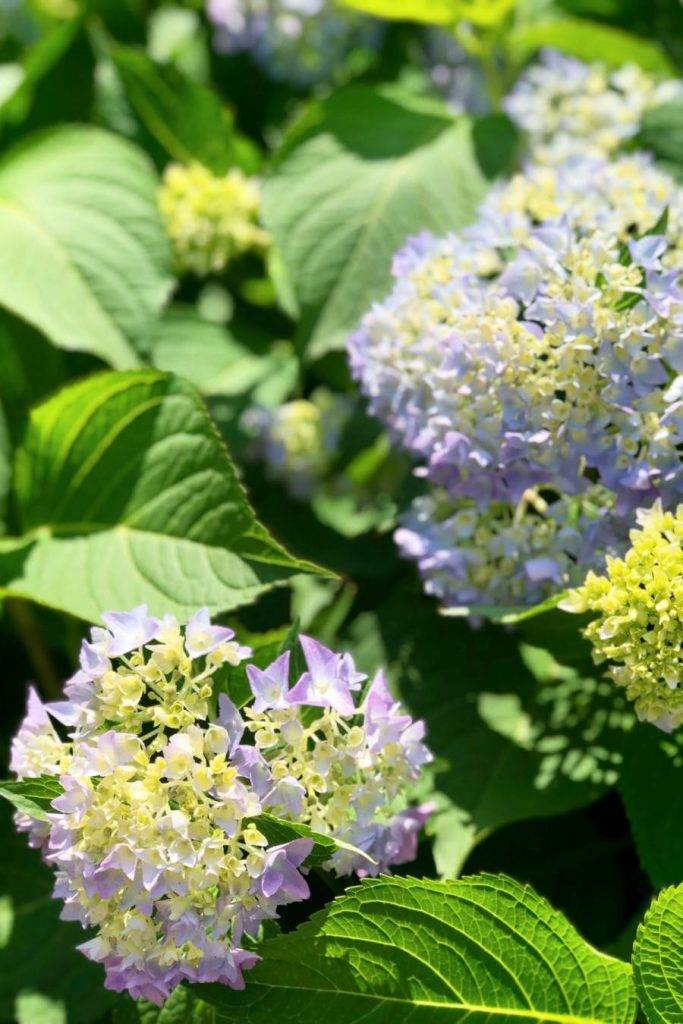
Watering Hydrangeas
Hydrangeas love water! They like to be hydrated but not wet! If they are too wet it stunts their blooms and rots their roots. They also like to be in a pot that drains well. Because they are in a pot and not in the ground I suggest watering them daily when the weather gets hot. Give the soil in the pot a little poke with your finger. If it feels dry it’s time to give them a good soak.
Hydrangeas may wilt a little in the hot weather but they will revive when temps drop in the evening and night. To help my hydrangeas keep hydrated I water them in the morning so the soil is moist in the hot afternoons.
You can make an easy self-watering system that works wonderfully with hydrangeas. And it will work with any planter that needs a bit of water. Just wait till you see how easy it is.
SEE THIS EASY TO MAKE SELF WATERING SYSTEM

Picking And Pruning Hydrangeas For More Blooms
I choose Endless Summer hydrangeas because they will bloom on old and new wood, which means they will boom throughout the summer.
Deadheading spent blooms is a good idea to promote new blooms. Cut them back to a new bud. Towards the end of the season, you may want to leave the blooms on the plant to dry naturally.

Overwintering Hydrangeas In Pots
If you want to keep your hydrangeas in pots, urns, or planters from year to year you can overwinter them. It’s easy but the conditions for overwintering will affect your hydrangeas chances of surviving!
Bring pots into the garage or basement if you live in an area where winters reach freezing temperatures and stay at freezing or below most of the winter. The shrub will go dormant but will still need to be watered about once a month.
I’ve had great success overwintering hydrangeas, especially in my large rectangular planters.
My urns and planters are on our porch and near the house so they don’t get too beat up by the wind! And they have survived from year to year.
Because Endless Summer flowers bloom on both new and old wood make sure not to prune them back too much. Prune to about 15 inches tall after the first hard frost. Cover with a thick layer of mulch or straw and water lightly throughout the winter.
These are hardy plants! They wintered over and bloom again this year!
Troubleshooting- Why Hydrangeas Don’t Bloom
The main reason most of us plant hydrangeas is for their showy blooms. It is so disappointing when these shrubs don’t produce their iconic flowerheads.
There are four main common problems that could cause hydrangeas not to bloom.
The most obvious reason is that they have been pruned, or cut back incorrectly. It’s important to know your hydrangeas variety and if they produce blooms on old wood (last year’s stems) or new growth (the current year’s new stems). Pruning hydrangeas whose blooms grow on old wood should be done in the fall after the flowers have bloomed.
And pruning hydrangeas whose blooms grow on new wood should be pruned in late winter or early spring.
The second reason hydrangeas may not bloom is that the flower buds have been damaged due to extreme cold and frost. Flower buds are tender and can be damaged by the cold.
The third most common reason hydrangeas don’t bloom is too much fertilizer. Hydrangeas need the right fertilizer to promote a healthy plant and showy blooms. Use an organic fertilizer made for hydrangeas or roses and work it into the soil. Hydrangeas only need to be fertilized twice a year. Once in the spring and again in mid-summer.
The fourth most common reason hydrangeas don’t bloom is because they may not get enough sunlight. Hydrangeas need at least 3-4 hours of light to bloom. Partial sun, like dabbling morning light, works well for hydrangeas.
With the proper hydrangea care, you can ensure beautiful blooms.
Frequently Asked Questions About Hydrangeas
Should I deadhead spent hydrangeas?
It is not necessary to deadhead spent blooms at all. However, it will make your shrub look neater. Just cut the flower head off and be careful not to nick or cut the stem.
Can I grow hydrangeas in a warmer climate?
Hydrangeas, for the most part, don’t like hot weather. However, there are new varieties that do better in warmer climates. If you are trying to plant and grow hydrangeas in a warmer climate plant them where they get only dappled morning sun and afternoon shade and water them when they start to wilt.
How to transplant a hydrangea?
Hydrangeas can be transplanted successfully. They transplant best in late winter or very early spring when they are still dormant. Dig out the hydrangeas carefully trying to keep the root ball intact. Put the root ball in a pre-dug hole. The goal is to get the roots back into the ground as quickly as possible. Backfill and water in.
Shop Planters And Hydrangeas
Related Posts
HOW TO DRY HYDRANGEAS FOR ENDLESS BEAUTY

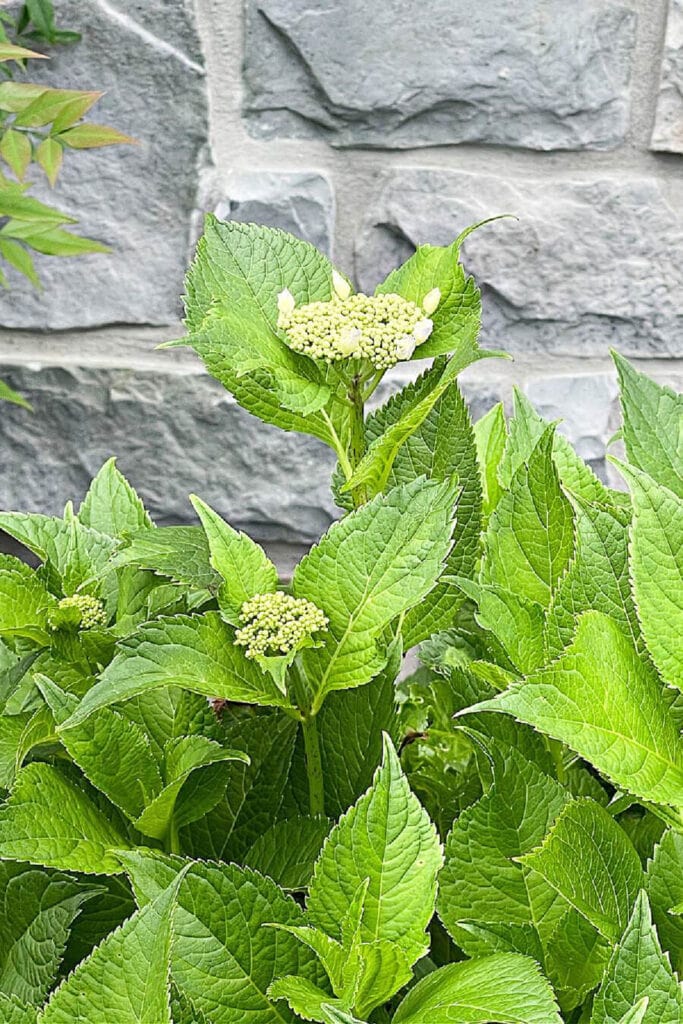
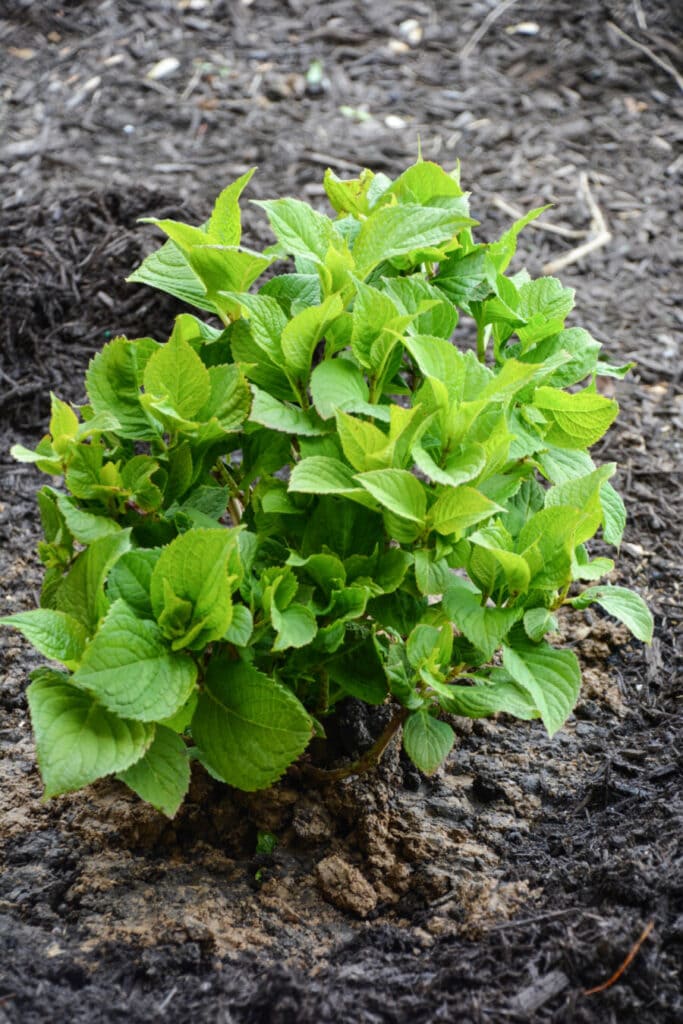


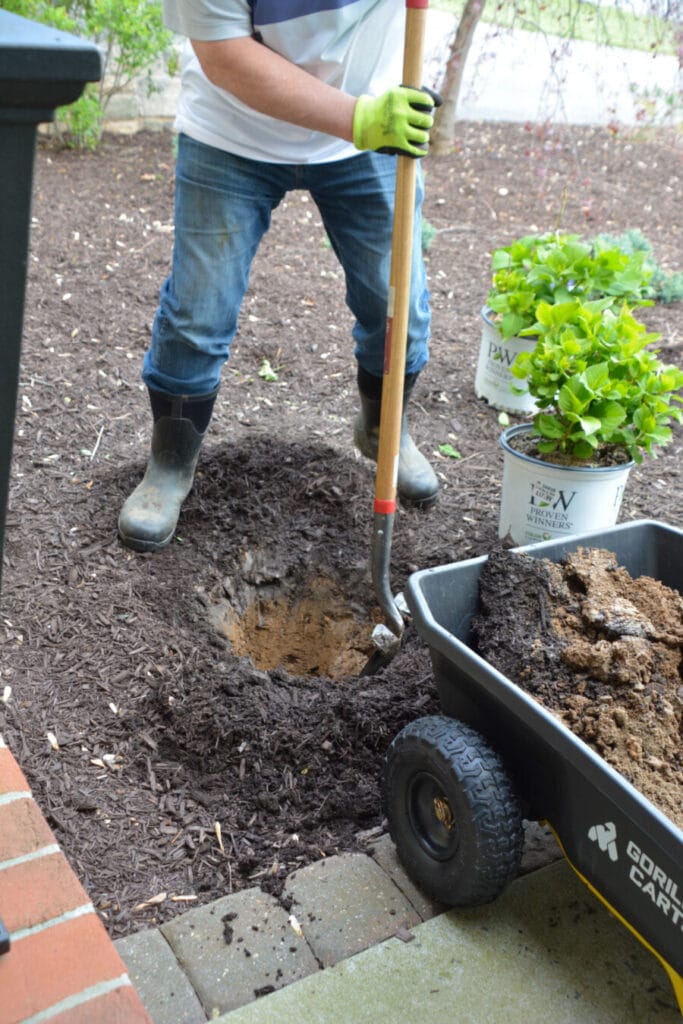

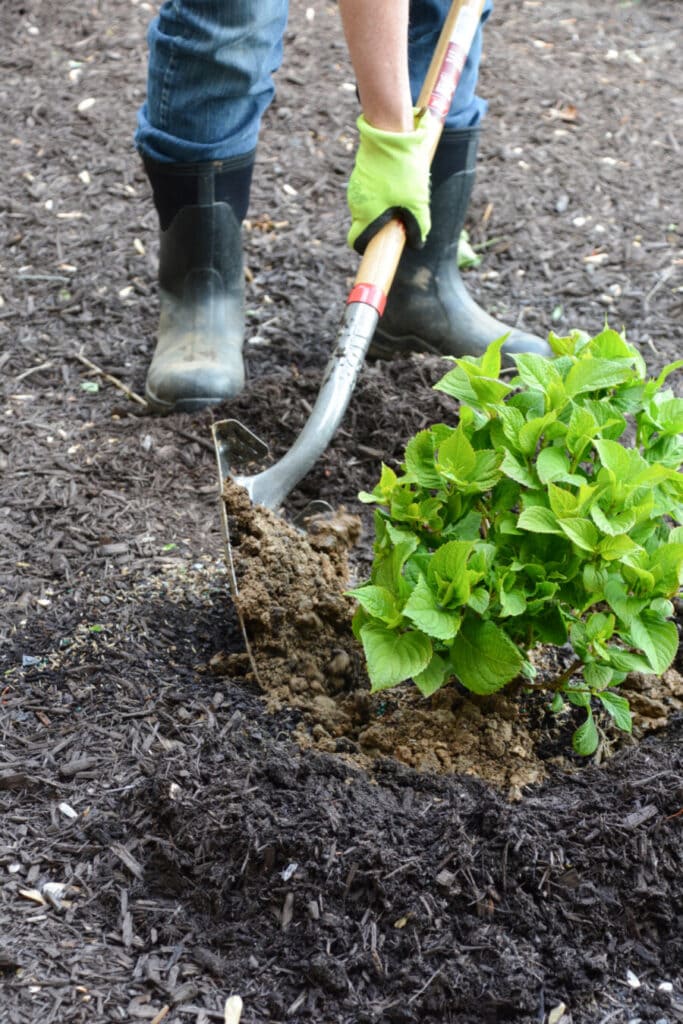

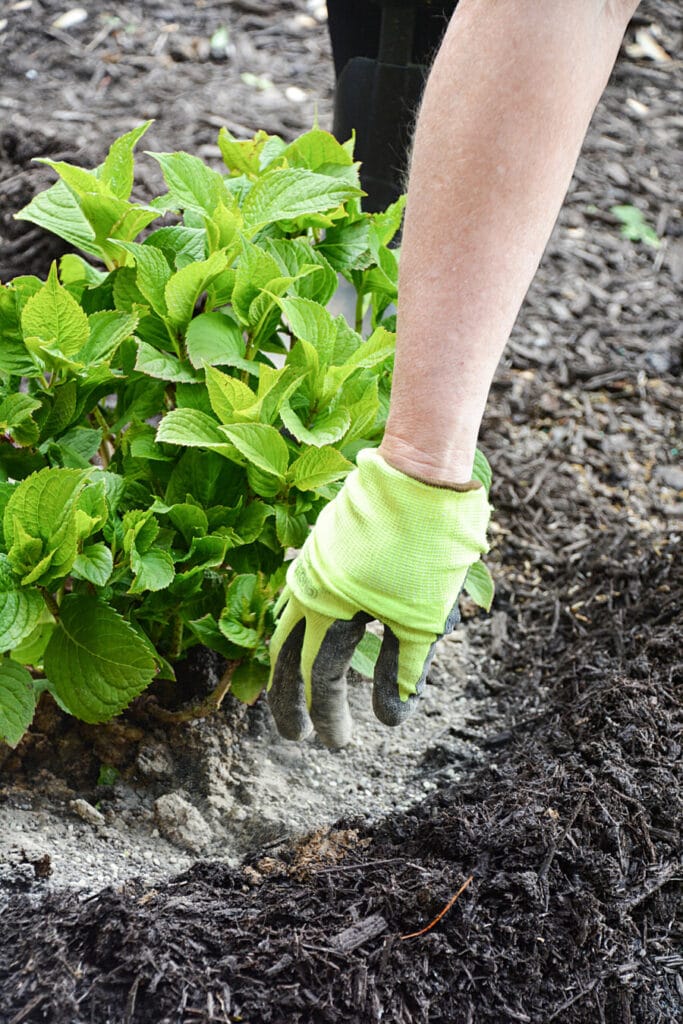

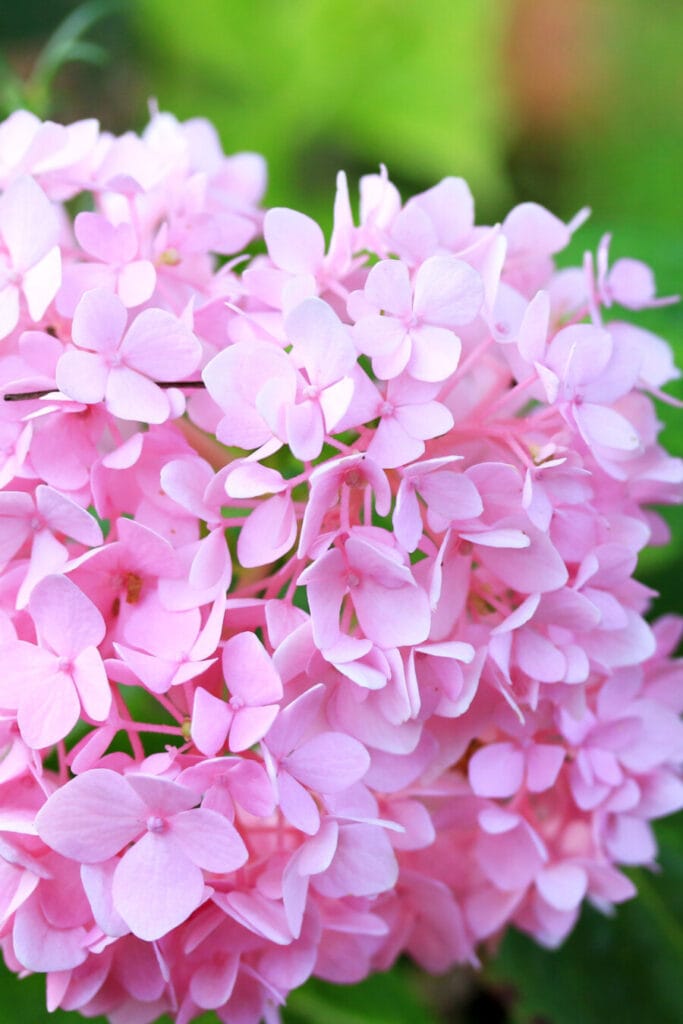
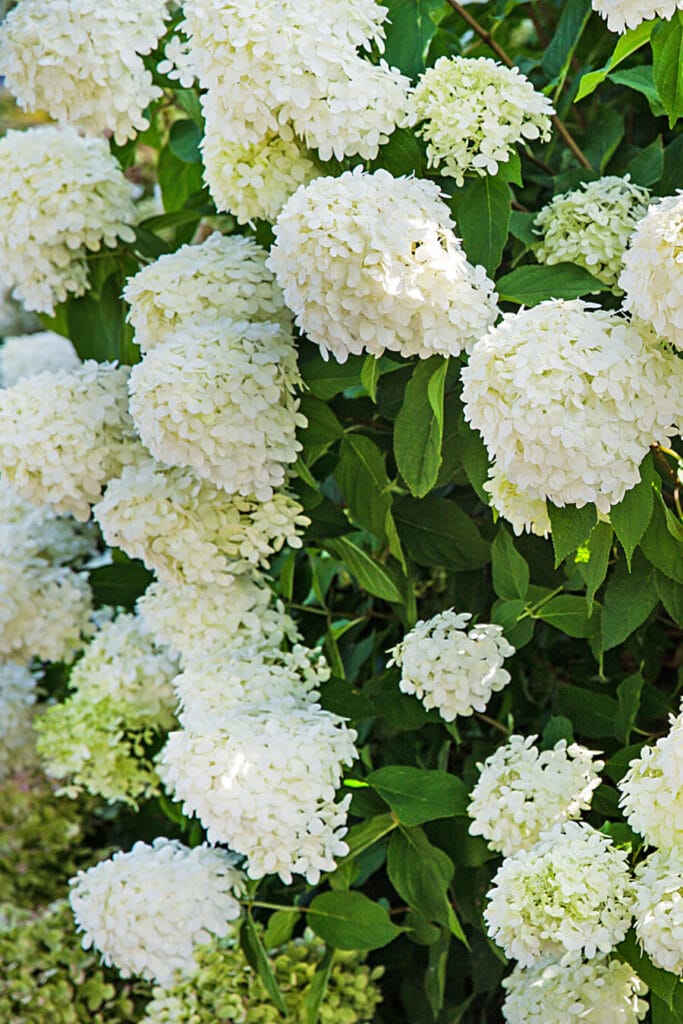












I tried 1 hydrangea in a pot last year but it was in full sun & when I moved it to my covered porch it didn’t come back. I’d like to try 2 more on my covered front porch, 1 on east end & the other on the west end. Will it grow on the west end if no direct sun?
Hi CJ it depends on the variety. Head to your local nursery and talk to a professional. Some can grow in no direct sun but most hydrangeas don’t do as well in full sun. Hope this helps.
Very informative and inspirational!